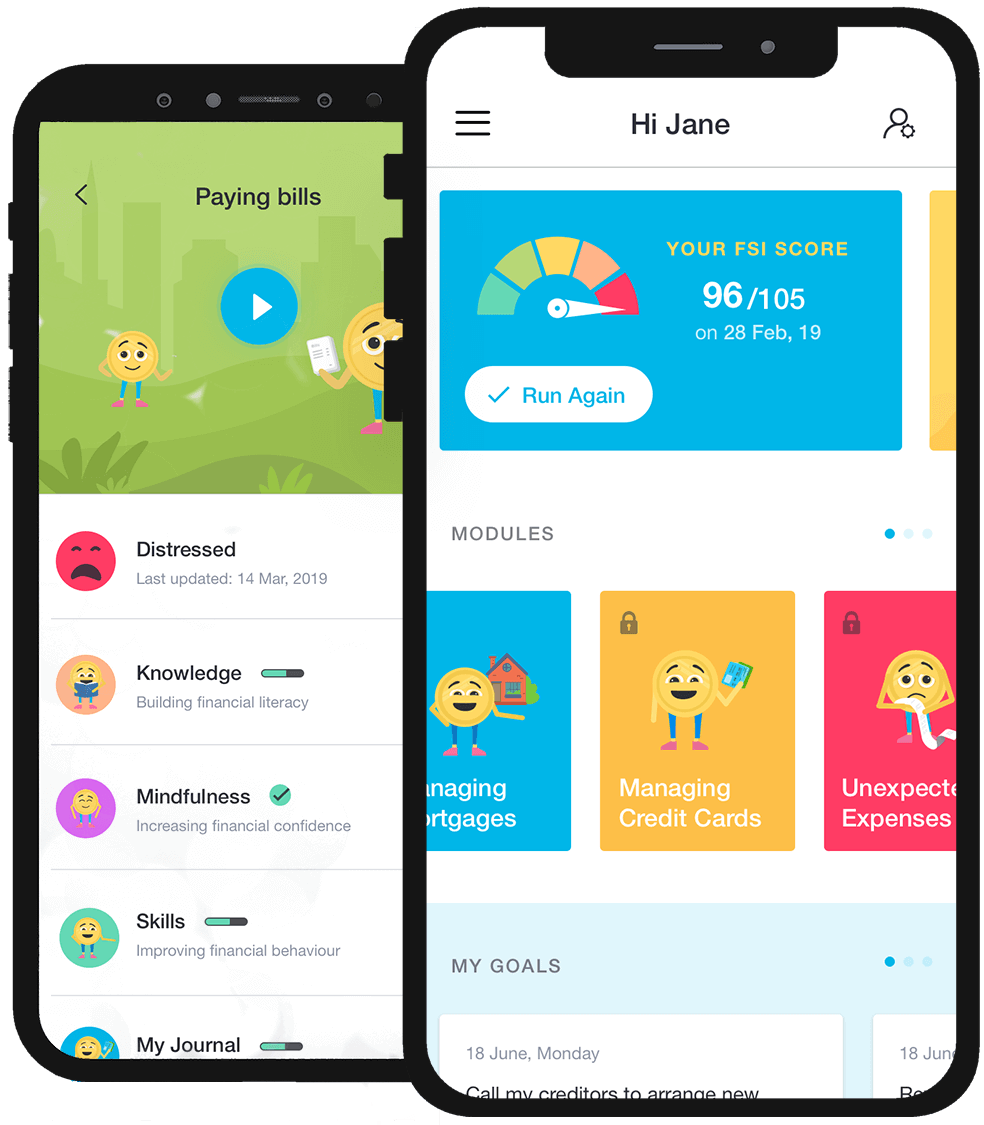[email-subscribers-form id=”2″]
What about the mindfulness part of financial mindfulness
What about the mindfulness part of financial mindfulness.
One crucial component within the Financial Mindfulness program is the practice of mindfulness.
Mindfulness by itself isn’t the answer to financial stress, money worries and financial anxiety, but it is an element of our solution. As a way of approaching our personal finances, maintaining an approach of financial mindfulness can significantly benefit our mindset.
When it comes to how we interact with money, the optimum state is one of financial mindfulness.
Financial mindfulness is described as having awareness and paying attention to your finances and financial behaviours. It means more than being money smart or financially savvy, as it includes the capacity to regulate emotional responses that can lead to unhelpful financial behaviour and financial stress.
Founder & CEO Andrew Fleming explains the genesis of Financial Mindfulness.
“About five years ago, I was in a dark place; whilst in hospital I was introduced to mindfulness and started practising 10 minutes a day. It was around the fourth day it started to shift my thinking and feeling. I felt calmer and could focus better. This experience planted the seed of Financial Mindfulness. I knew this practice could be applied in helping to reduce financial stress.”
“By incorporating a short practice of mindfulness tailored around learning financial literacy and goal setting, increases the chance of retaining new information and applying it in practice”.
“Financial Mindfulness, the company was born, and I have been extremely fortunate with the professionals who have joined the team.”
The program was developed by leading Neuropsychologists, Financial experts, Mindfulness practitioners, scholars and research scientists in Stress Management, Data and Biopsychosocial statistics.
The app measures and reduces financial stress by integrating financial literacy, mindfulness, goal setting and behavioural tools on Paying Bills, Managing Credit Cards, Managing Mortgages, Unexpected Expenses and more.
The mindfulness component of the modules can be a curious experience for newcomers or even foreign. Consistency applied, anyone can achieve the same experience of becoming calmer and improved focus and concentration.
What if you have tried Mindfulness, and it’s not really ‘working’. And how can you be sure if it’s doing anything at all?
It’s worth noting that a starting point of using mindfulness meditation as a tool to find self-improvement is, apparently, backwards.
“Meditation practice isn’t about trying to throw ourselves away and become something better; it’s about befriending who we are,” the world-famous American meditation teacher and author Pema Chodron said.
Chodron, was a stressed-out schoolteacher called Deirdre Blomfield-Brown until she was crippled by depression following the end of her second marriage in the 1970s.
So how does Chodron, one of the world’s foremost experts, do it?
“You just sit down with yourself,” Chodron told Oprah in a 2008 interview.
“It’s a way of being completely open to whatever is happening in your mind, and you realise your mind is wild and crazy and all over the place. The instruction is so simple: Just keep coming back to your breath. Then you say, “This is almost impossible!”
“It isn’t, but I know how hard it is.”
Mindfulness practice doesn’t dictate that we focus on financial matters, even if we seek a state of financial mindfulness.
But money worries and concerns are a big part of life, so in meditation practice, they may well come up as you sit.
If this happens, the basis of financial mindfulness applies: observe your thoughts around finances, financial behaviours, attitudes and beliefs around finances.
Don’t fight them, but don’t try to solve money puzzles in your mind as you sit in mindfulness practice, either.
Observe the thoughts and let them go.
Initially, it will be hard – even Chodron admits her children sometimes found her uptight when she learned to meditate.
In general, if we feel like quitting after a couple of days, we are expecting too much too soon.
“You might call it beginner’s un-comfortability,” says Marc Richardson, a Sydney psychologist says.
“I tried to learn the guitar; every time I picked it up, I would sweat because I was so uncomfortable.”
“Trying anything new can be uncomfortable, and to experience the full benefits, one would need to engage for quite a while.”
Are there strategies, though, for dealing with the specific problems if they persist? Some of the most common include I’m overthinking, I can’t do this, I can’t sit still, I don’t have time, it hurts.
Here’s what British mindfulness expert Shamash Alidina wrote about some of these problems in Meditation for Dummies.
I can’t do this:
“When people say this, they usually mean they can’t focus; mindfulness meditation is one of the best ways to develop that focus! It’s entirely normal for your mind to wander off when you’re meditating.
“However, as soon as you’ve noticed, bring your focus back to the object of attention specified in the meditation (often your breath).
“Each time … you’re training your mind to be more focused in the future. Remember, you can’t fail at meditation. As long as you try, you’ve succeeded.”
I can’t sit still:
“Some meditations require you to be … still for half an hour, but many don’t need this—you [can do a] body scan meditation lying down. And mindful yoga, walking or tai chi is meditation in movement.
“A three-minute mindfulness exercise is a great practice to do daily.”
I don’t have the time:
“If some of the busiest people in the world can find time to stop and meditate, even if it’s only five minutes, you probably can too.
“You can do mindfulness meditation at any time. You can wash the dishes mindfully, you can walk your dog mindfully, or you can even have a mindful shower. So that takes no time at all out of your busy day.”
What if doing meditation ‘hurts?
Tara Healey and Jonathan Roberts, writing for mindful.org are clear on this: “Being in a lot of pain is not a mark of doing it right. However, it can take some work to find a position (or a few positions) that don’t lead to intense pain. Try out different postures and supports; a hugely important lesson of meditation is that even comfort is, well, bound to become uncomfortable eventually.
“For this reason, once you find a suitable posture and support, it’s a good idea to avoid making too many adjustments.”
Getting fully into the meditation itself can help: “People have found that as they relax that inner tension, it often results in less bodily tension.”
And what about I’m overthinking?
That one is addressed by realising practice makes perfect.
You accept the thoughts you have without judgement and gently set them aside. Thoughts are a normal part of life, and they will come and go, hence the widely used analogy of allowing thoughts to pass like clouds against a blue sky.
The more you meditate, Chodron told Oprah, “The more you have a lightness about what’s occurring in your life; it’s not about becoming indifferent to life’s experiences; it allows you to be much more present with whatever arises.
“You’re fully engaged, but you see it from a different perspective.”
In other words, you will be able to cope much better with what life throws at you.









